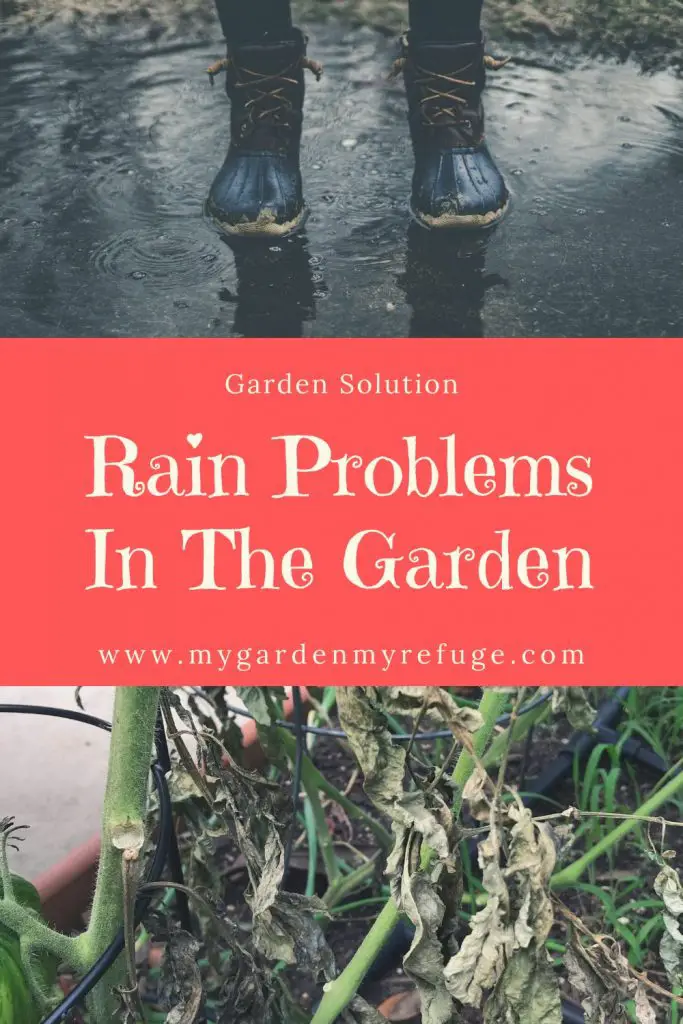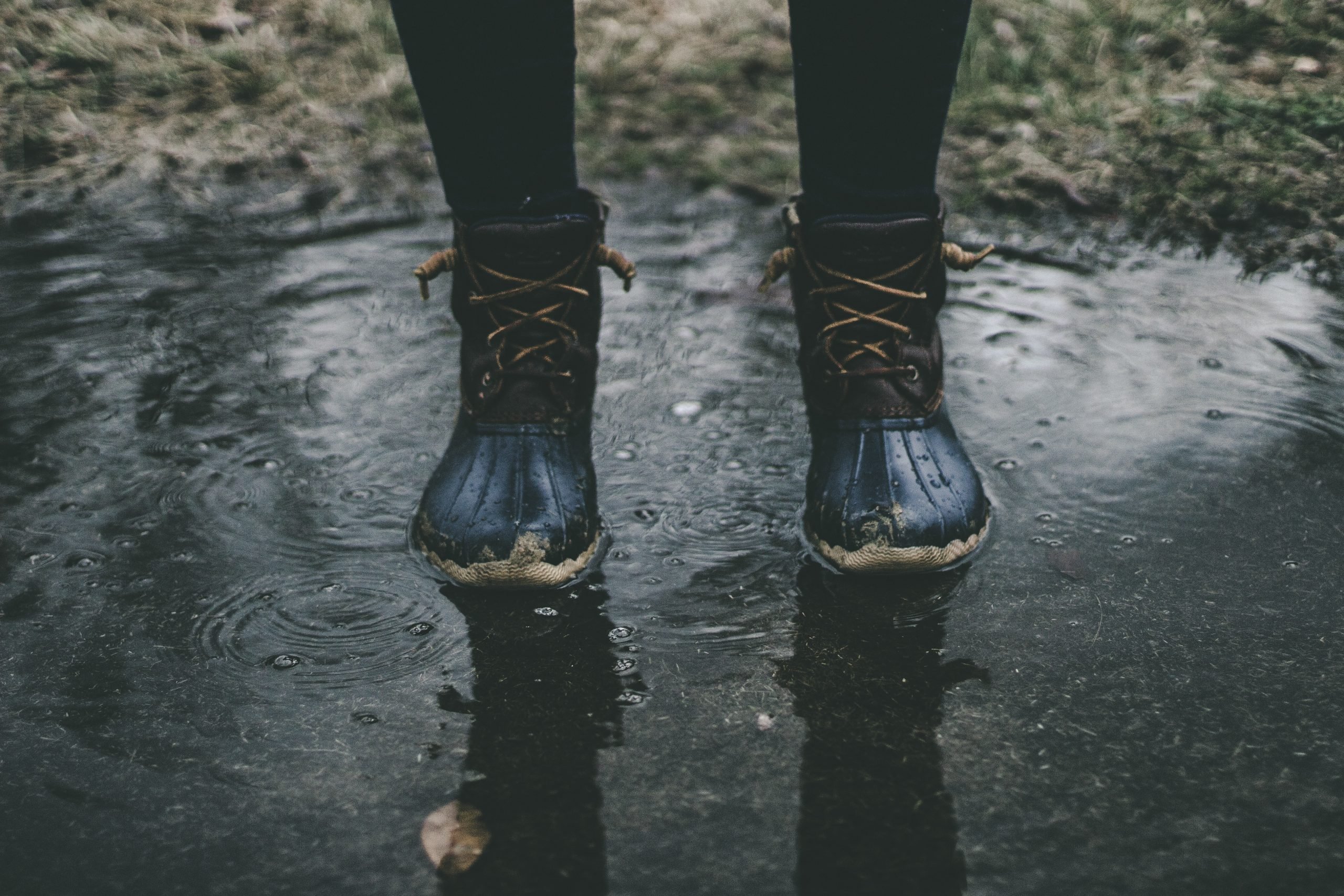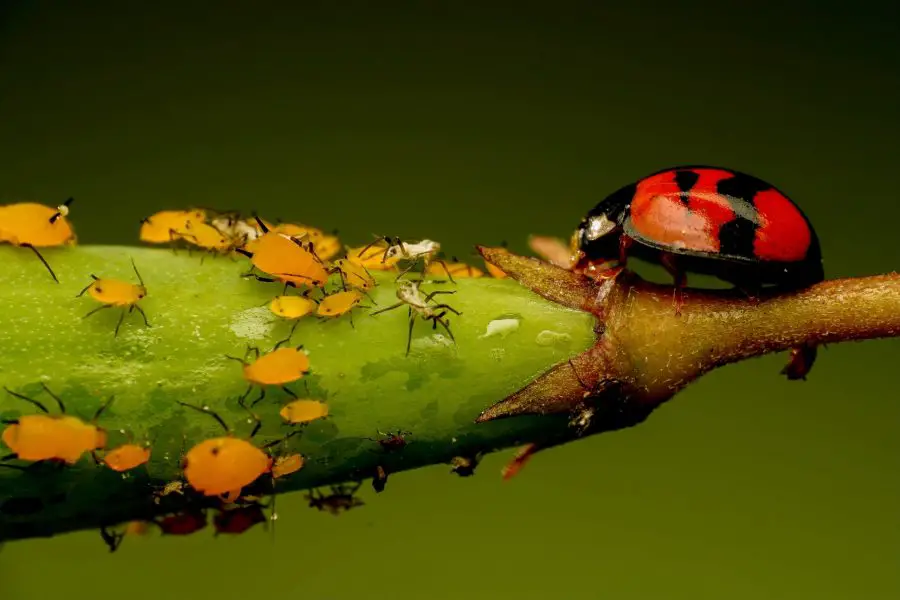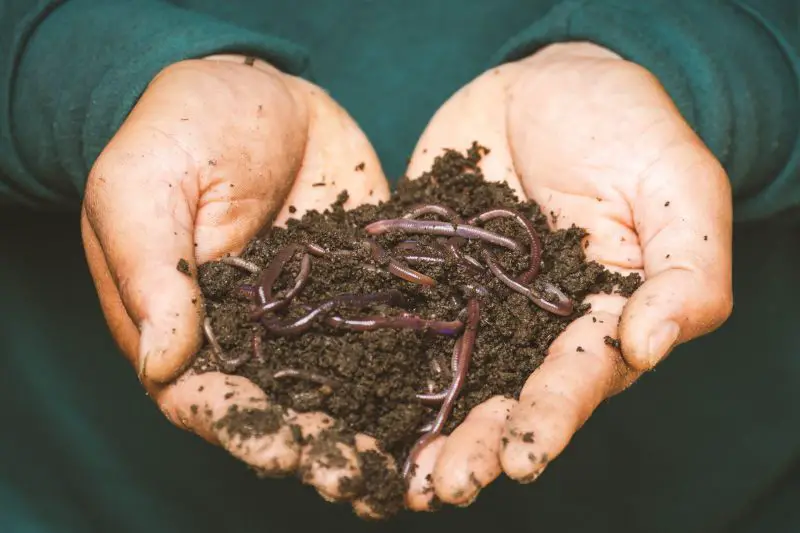Nothing more soothing to a gardener’s ear like a soft rainfall on the garden and an enjoyable walk-through after it stops. The air feels cleaner, and the plants seem greener. But, unfortunately, sometimes this much-wanted rain becomes a nightmare when heavy downpours and continuous overcast days wreak havoc in the garden.
#1 Root Damage
Most plants do not like wet feet. When the soil does not get the chance to drain or dry bit, plants’ roots may suffer significantly. The most common problem is root rot, which may manifest in dropping leaves, yellowing, or mushy plant tissue. The plant may also fall over after losing its anchoring system.
The fix for this problem is the initial setup of the garden. First, make sure to provide your plants with the proper growing environment. In general, well-draining soil is key to a happy garden. You can also use raised beds to avoid low ground and paddles.
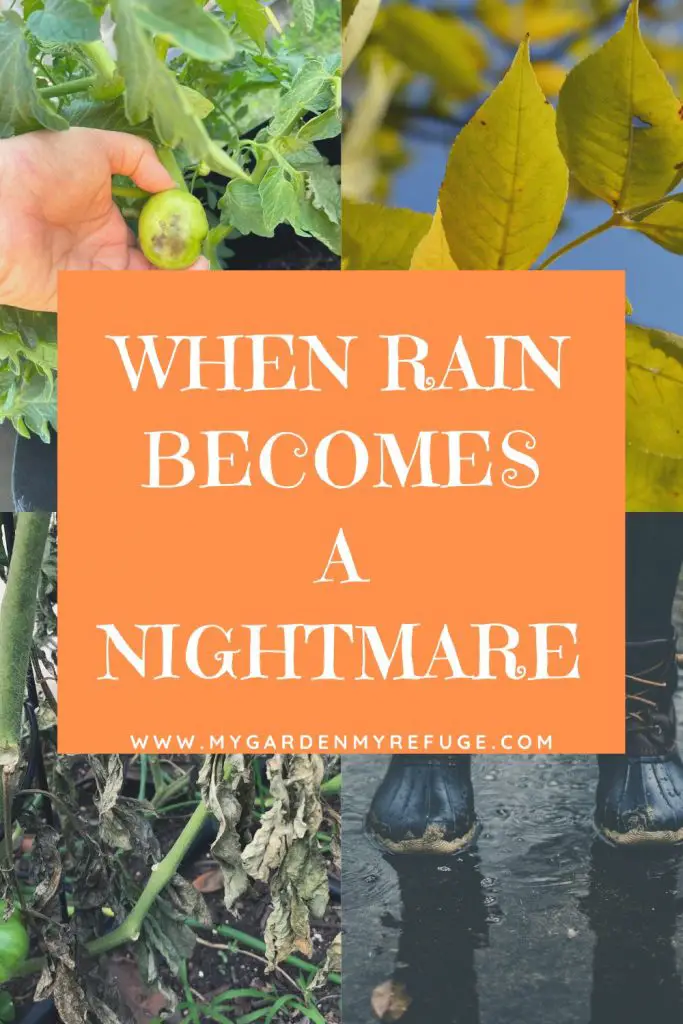
#2 Disease Galore
Wet and warm weather is a breeding ground for fungal diseases.
Fungal Diseases
Rust, mildew, and blight are the most common diseases in the vegetable garden. You may take preventative measures to reduce the damage. If the condition has already settled, clear the garden from any diseased material. Burn it or discard it and avoid adding it to your compost pile. Sanitize your hands and tools after pruning to prevent further spread.
Yellowing of the leaves
Chlorosis is an iron deficiency disease that manifests in the form of yellow leaves. But the yellowing can also be caused by other nutrient deficiencies, such as magnesium or nitrogen.
Constant heavy rains tend to wash away nutrients from the soil, disturbing the plant’s lively functions.
Long overcast days also can cause yellowing of the leaves due to low chlorophyll production. Patience is key in this situation. Wait for the rainy days to pass by, then feed your plants as soon as the sun returns.
Blossom-end-rot
Blossom-end-rot is a calcium deficiency caused by too little or too much water. The oversaturated soil prevents plant’s cells from absorbing calcium adequately. Unfortunately, patience is your only option. Once the rain stops, use a balanced fertilizer to help the plants recover.

#3 Mushroom feast
Mushrooms thrive in wet and shady conditions. After a long rainy period, gardeners notice abundant mushroom growth on their soil and mulch. It only shows that the garden is rich in organic matter. In addition, mushrooms help break down dead material providing the plants with ready-to-use nutrients.
These mushrooms come in different shapes and colors, and some of them are easily identified. The most unfamiliar one is Dog Vomit Slime, which is a mold rather than a shroom. The name it holds describes well.
You should not be concerned about the presence of these friendly organisms unless you have pets or kids who might try to sample them. In this case, you may remove them using a shovel and add them to your compost pile. You can also turn them into the soil directly and bury them.
#4 Blossom drop and no fruit
After long rainy periods, you may notice blossoms on your plants dropping, leading to low fruit production. It is due to a lack of pollination since the friendly bugs prefer to take shelter from the rain. You may take over their job and try to hand pollinate your crops.
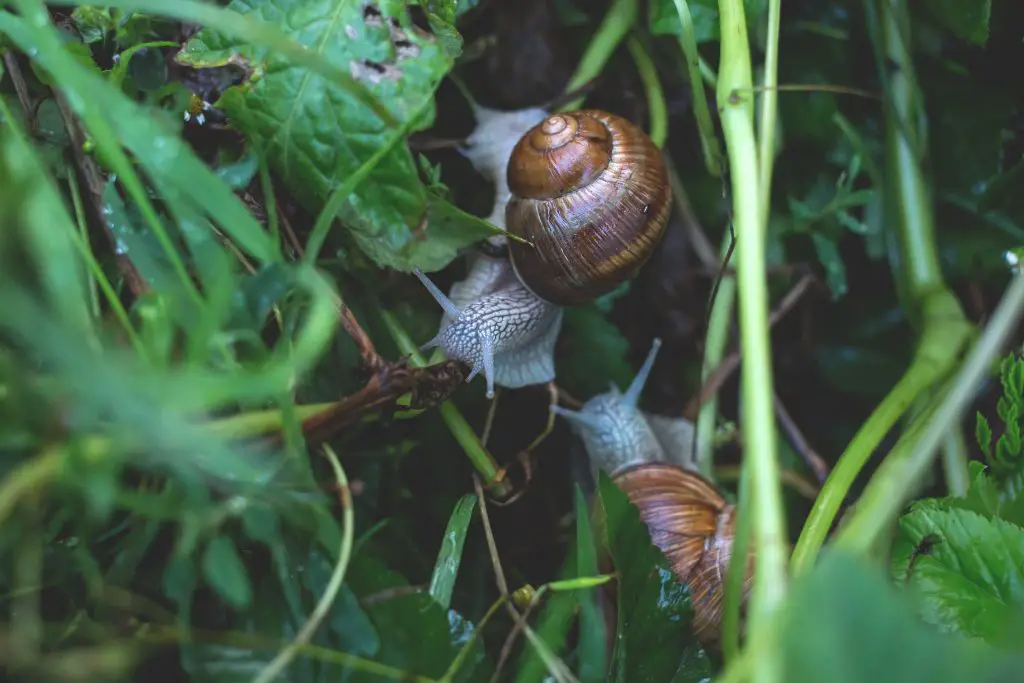
#5 Pest damage
Many pestst thrive in the wet weather, and their damage to the garden can be heartbreaking.
Slugs, snails, and pill bugs
These nasty little critters devour plants when you are not looking. Usually, you can identify their damage through their chewing pattern. Slugs and snails leave a trail behind them and chew on the outer border of the leaf. The pill bugs tend to chew on the woody part of the plant, mainly at the base. Sprinkle Sluggo Plus around the plants to get rid of these pests.
Caterpillars
Whitefly caterpillars or cabbage worms multiply fast on cool, wet days. They can devour your brassica plants and turn them into a skeleton overnight. BT or a caterpillar killer is an organic product you can safely apply to your vegetable garden.
#6 Cracked fruits
Fruit cracking is common in tomatoes, where the skin breaks open due to oversaturation. The wound can attract fungi and insects, leading to more problems in the garden. Cracked tomatoes are still edible if you cut the damage and use the good part. Unfortunately, there is no good solution for this problem when rain is the root cause. Make sure the soil drains well, and harvest the tomatoes before the storm, if possible.
#7 Stunted growth
Common sense is that rain helps plants grow fast and healthy. However, the reality is too much of one thing is just too much. As mentioned before, too much rain will leach nutrients away from the soil, causing deficiencies. As a result, the plants suffer and fail to thrive. Amend the soil around your plants with good compost and fertilizer to help them rebound.
Did you experience different problems during heavy rains in your garden? Do you have tips on how to fix some of these problems? Do not hesitate to comment and share with all of us.
